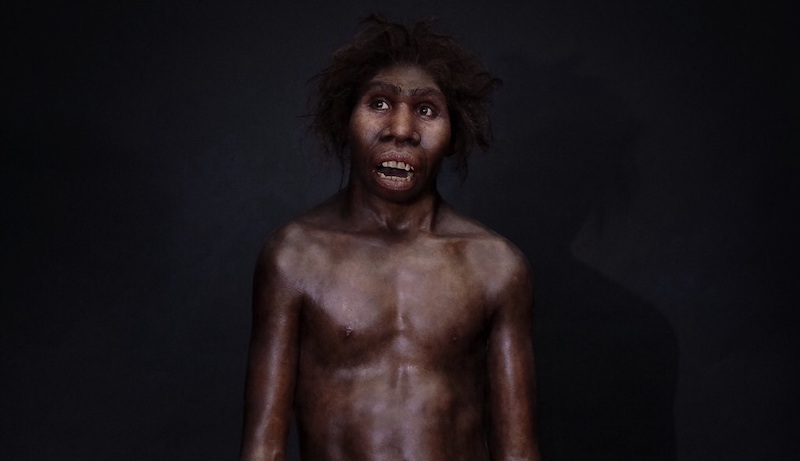The Archaic World
Episode #2 of the course Human history and the first civilizations by Brian Fagan
Welcome to the second lesson!
Today, we’ll cover an enormous slice of time, from the appearance of a new form of human, known to experts as Homo ergaster, about two million years ago, up to about 200,000 years before the present, when fully modern people first evolved. This was an important period in human history, which witnessed the appearance of pre-modern humans and the first colonization of much of Europe and Asia.
The “Working Person”
Homo ergaster (the word ergaster means “working person”) evolved in Africa from early Homo roots. These new humans were taller than early Homo, often well over 5 feet (1.5 meters) tall, with a brain capacity of 700 to 800 cc, about half that of modern humans. They had long, slender legs, heavy bone ridges over their eyes, and protruding jaws.

Homo ergaster.
Homo ergaster lived in small bands and were constantly on the move. Soon after two million years ago, they moved out of Africa during a period of constant climate change. Some humans moved into Central Asia and Europe by 1.5 million years ago and into East Asia at about the same time. Within a few hundred thousand years, there was a much greater diversity of them. In Southeast Asia, India, and China, they are known as Homo erectus.
Fire and Technological Change
Somewhere around 1.6 million years ago, Homo ergaster tamed fire. This was a major step forward, for it provided vital protection against predators, enabled people to cook food, and allowed humanity to colonize much colder environments, like those of Europe.
There were other technological changes too, among them the development of versatile stone axes that could be thrown or used for butchering animals as large as elephants.
Plant foods and edible roots were important for survival, but the people were expert hunters who could prey on large animals like elephants, driving them off cliffs or killing them when they became bogged down in swamps. Enhanced brain capacity, and perhaps better ways of communicating with hand signals and sounds, may have led to cooperative hunts against big game involving several bands.
The Neanderthals
Human evolution took many paths between a million and 200,000 years ago. Some of these paths led to such well-known archaic humans as the Neanderthals (Homo sapiens neanderthalensis).

Human and Neanderthal skulls.
Neanderthals are often depicted as cartoon-like cave people who had clubs and dragged their wives around by their hair. In fact, they were tough people who were exceptionally strong and capable of adapting to extreme cold in Europe. But their technology was still very simple, consisting of little more than stone-tipped spears and clubs. They were expert stalkers, which was a necessity because they had to approach even large animals very closely in order to kill them. In many cases, the hunter may have actually leapt on the prey’s back to spear it through the heart.

Skeleton and restoration model of Neanderthal (La Ferrassie 1). Exhibit in the National Museum of Nature and Science, Tokyo, Japan.
Neanderthal bands thrived from western Europe to central Asia and the Middle East. They were skilled hunters and had more cognitive skills than their ancestors. Some Neanderthal bands buried their dead, suggesting at least some belief in spiritual forces. But they differed considerably from we modern folk with our fluent speech and formidable abilities at thinking, reasoning, and planning ahead. They were unable to compete with moderns with their superior intellectual powers, who colonized Africa, Asia, and Europe after 50,000 years ago. At first pushed to the margins, Neanderthals became extinct by 30,000 years ago.
So, by 200,000 years ago, pre-modern humans had moved out of Africa into Europe and Asia, into environments that were far more severe than the tropics. However, no one had colonized Australia or the vast open plains of Central Asia. The Americas were uninhabited. In Lesson 3, we’ll talk about the dramatic changes that followed on the emergence of fully modern Homo sapiens. It was then that humanity truly colonized the world.
Recommended book
Share with friends
